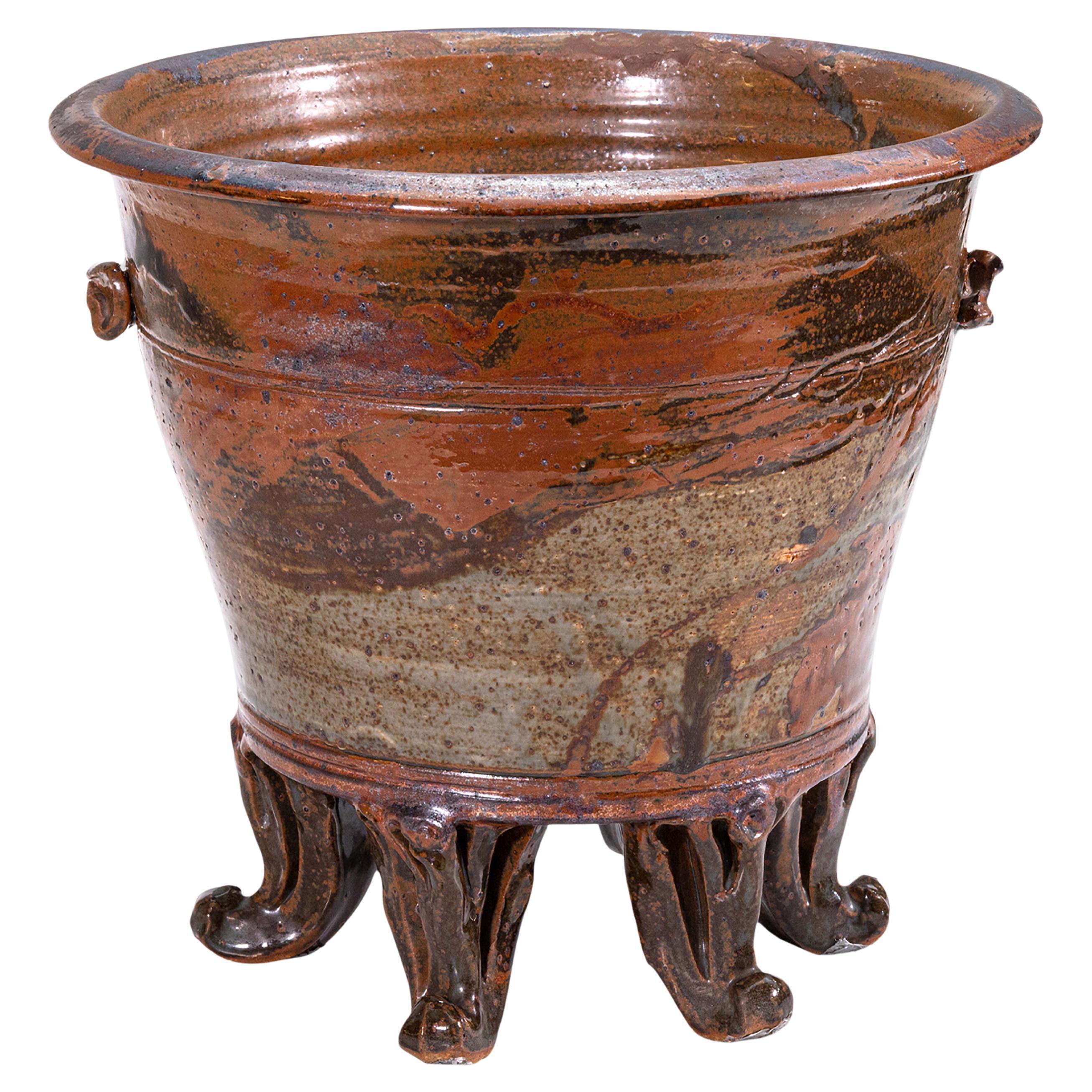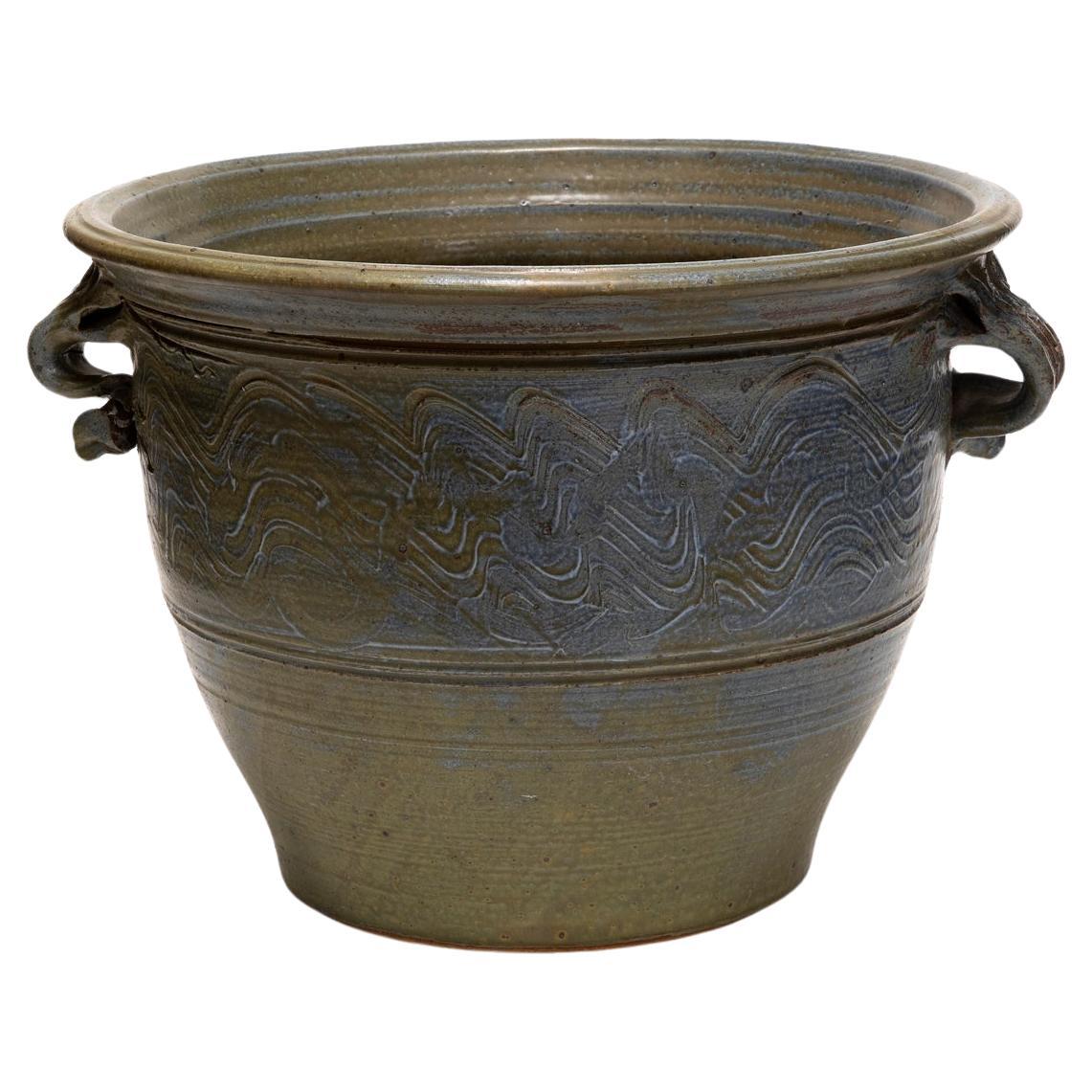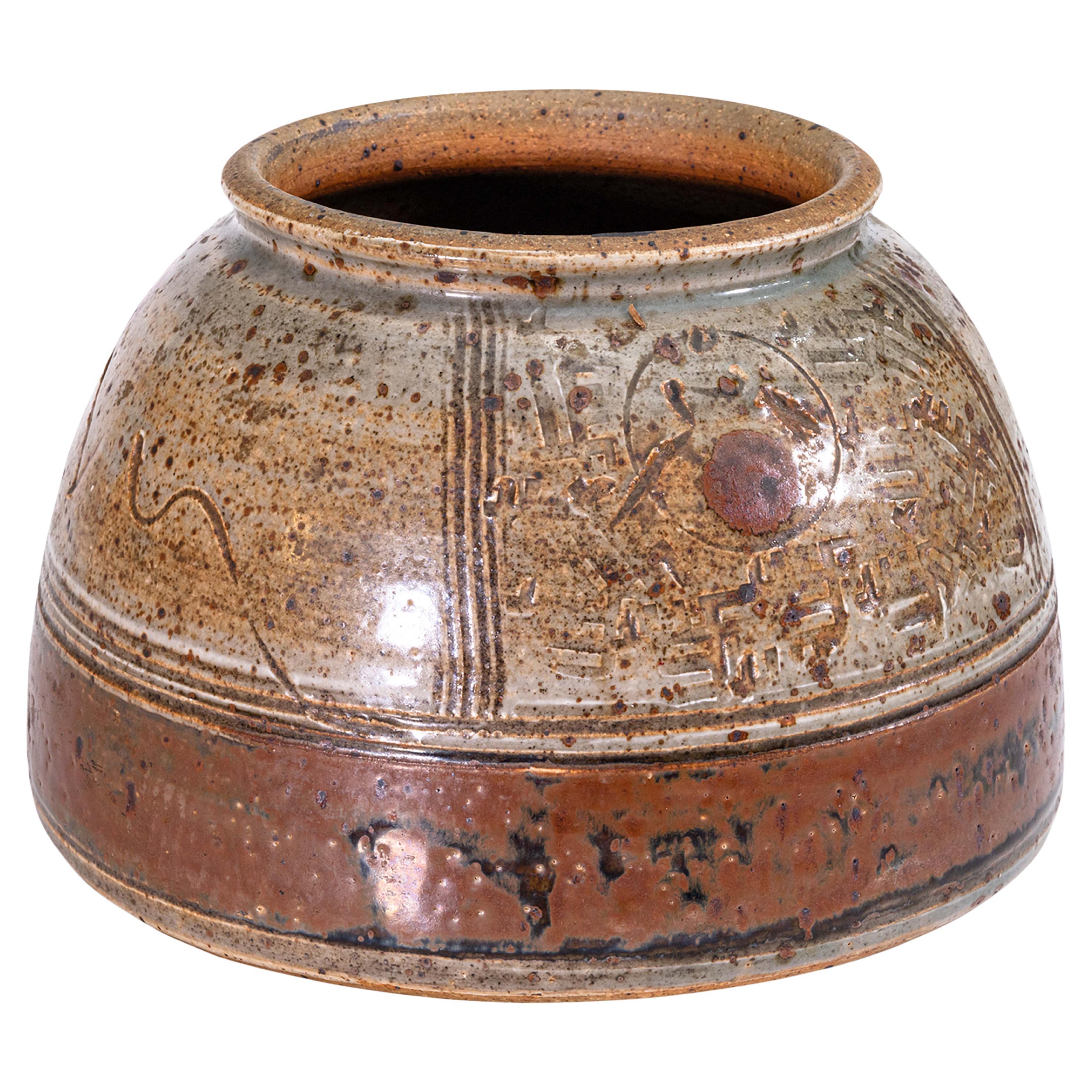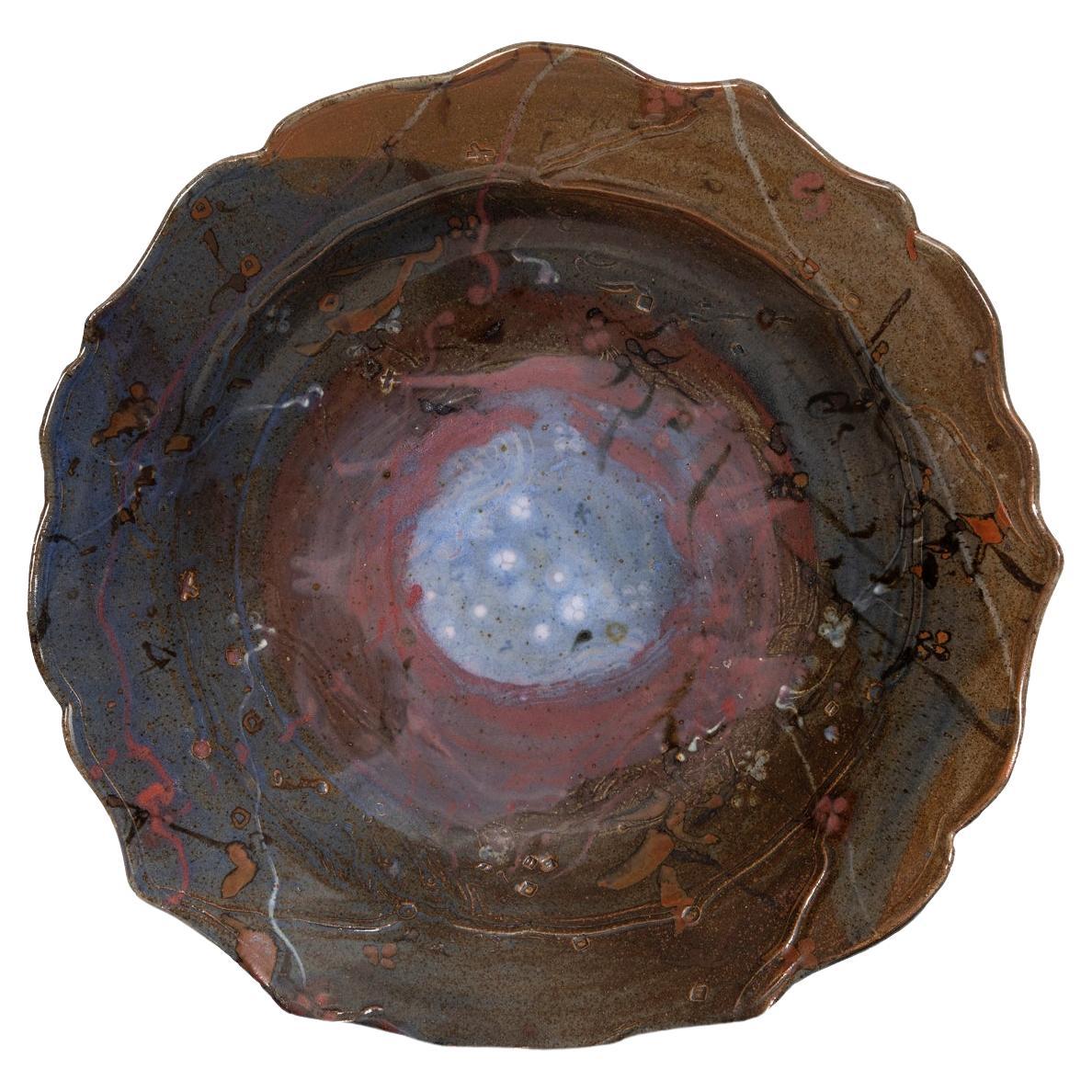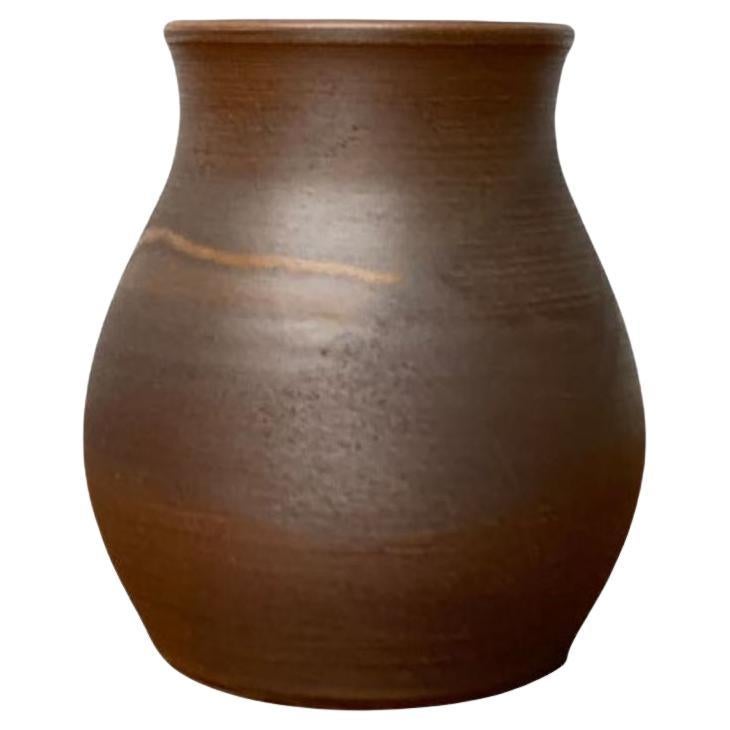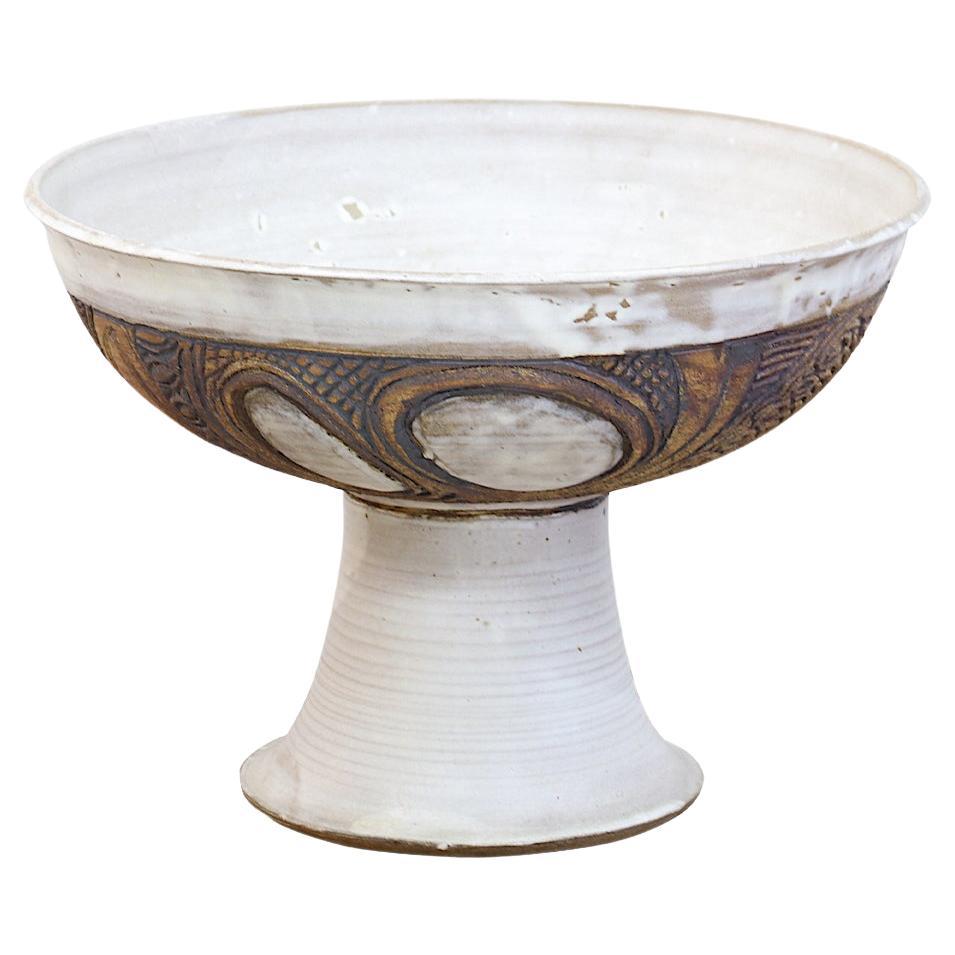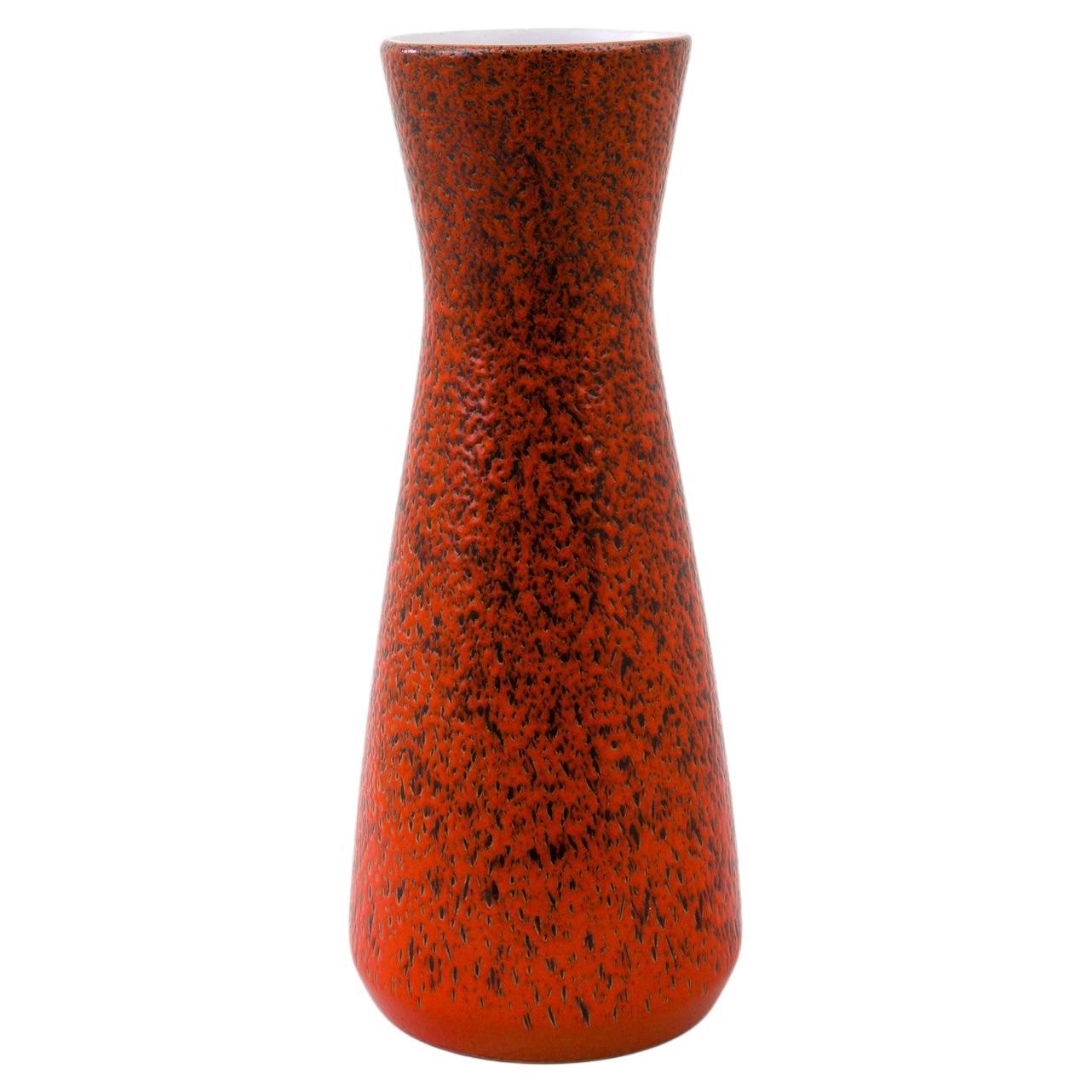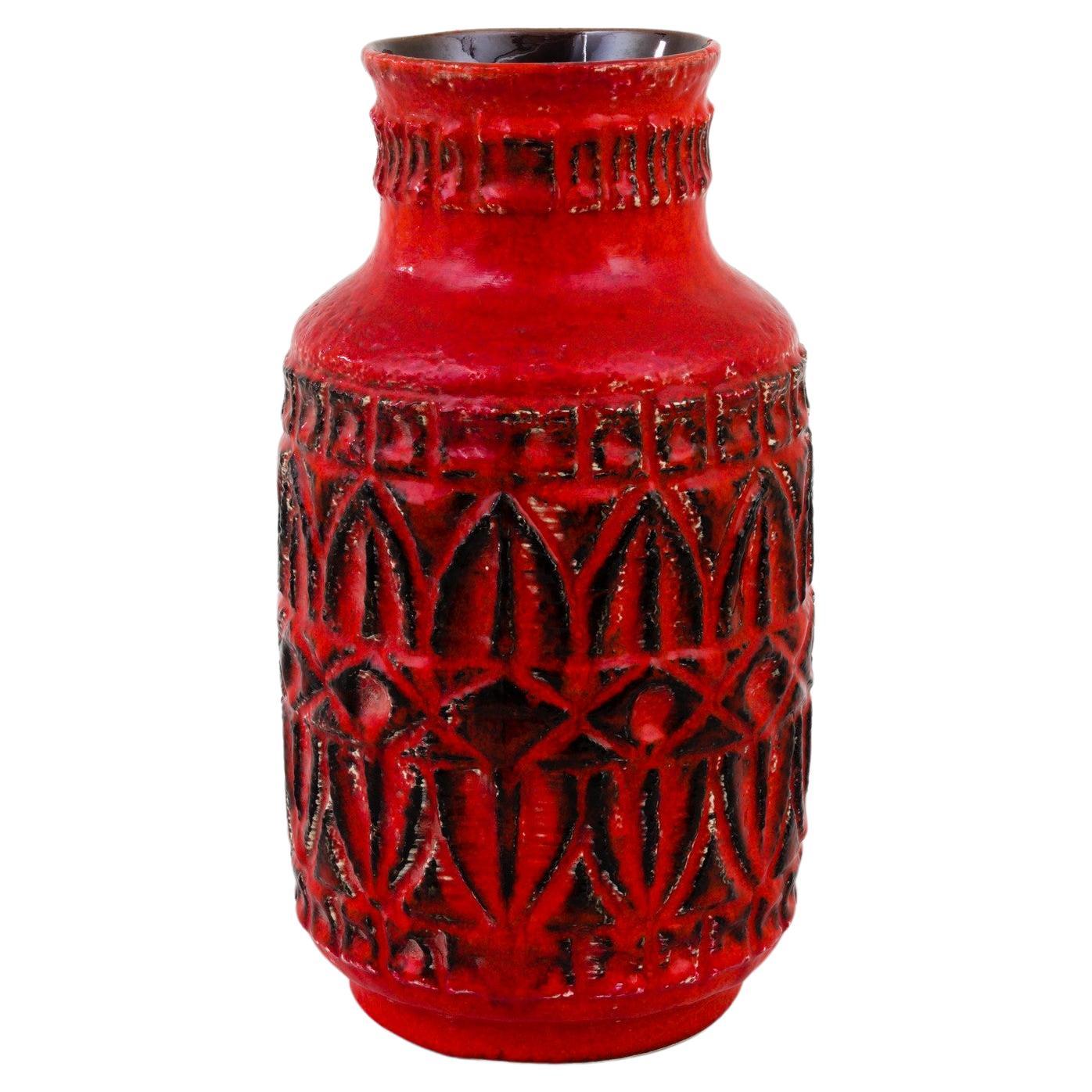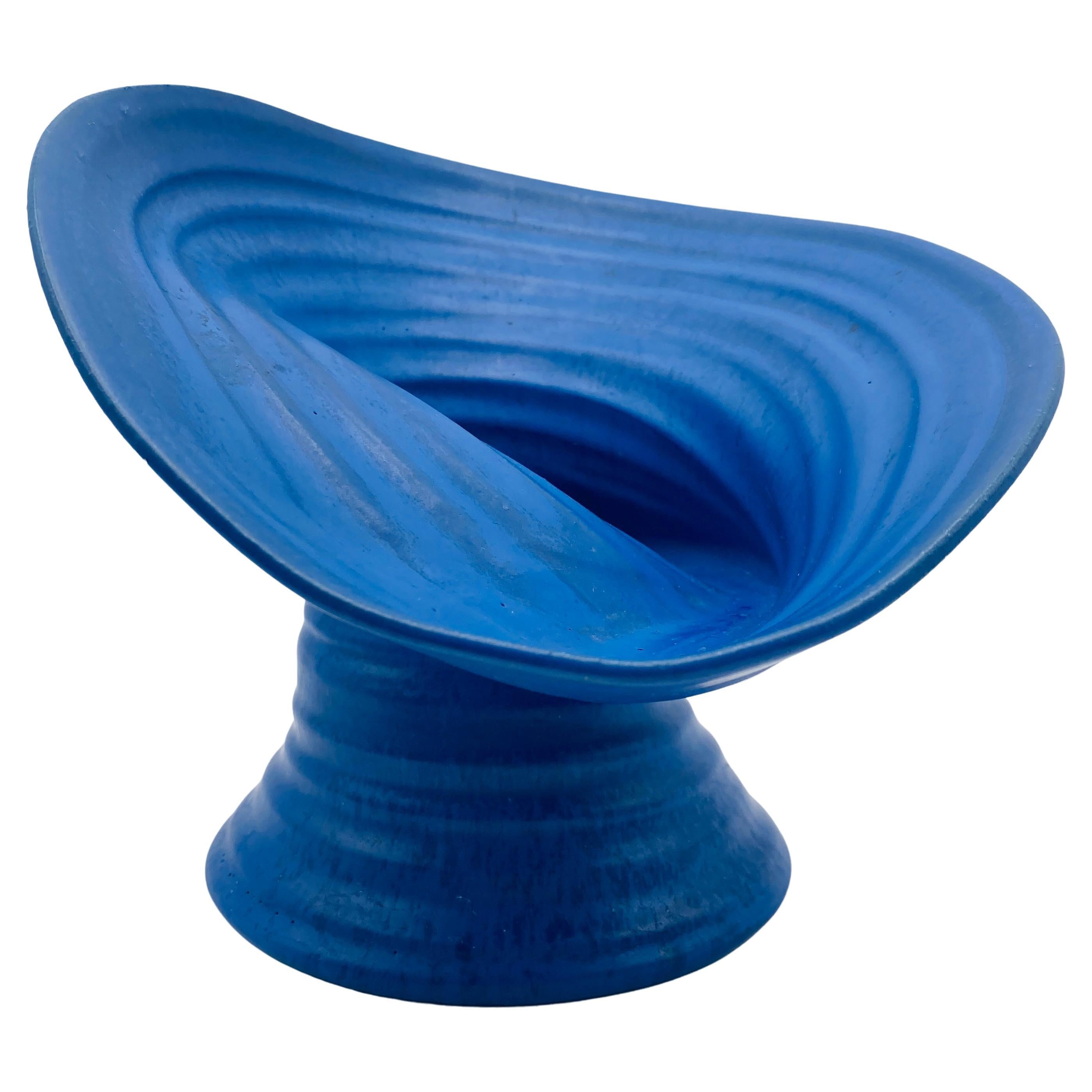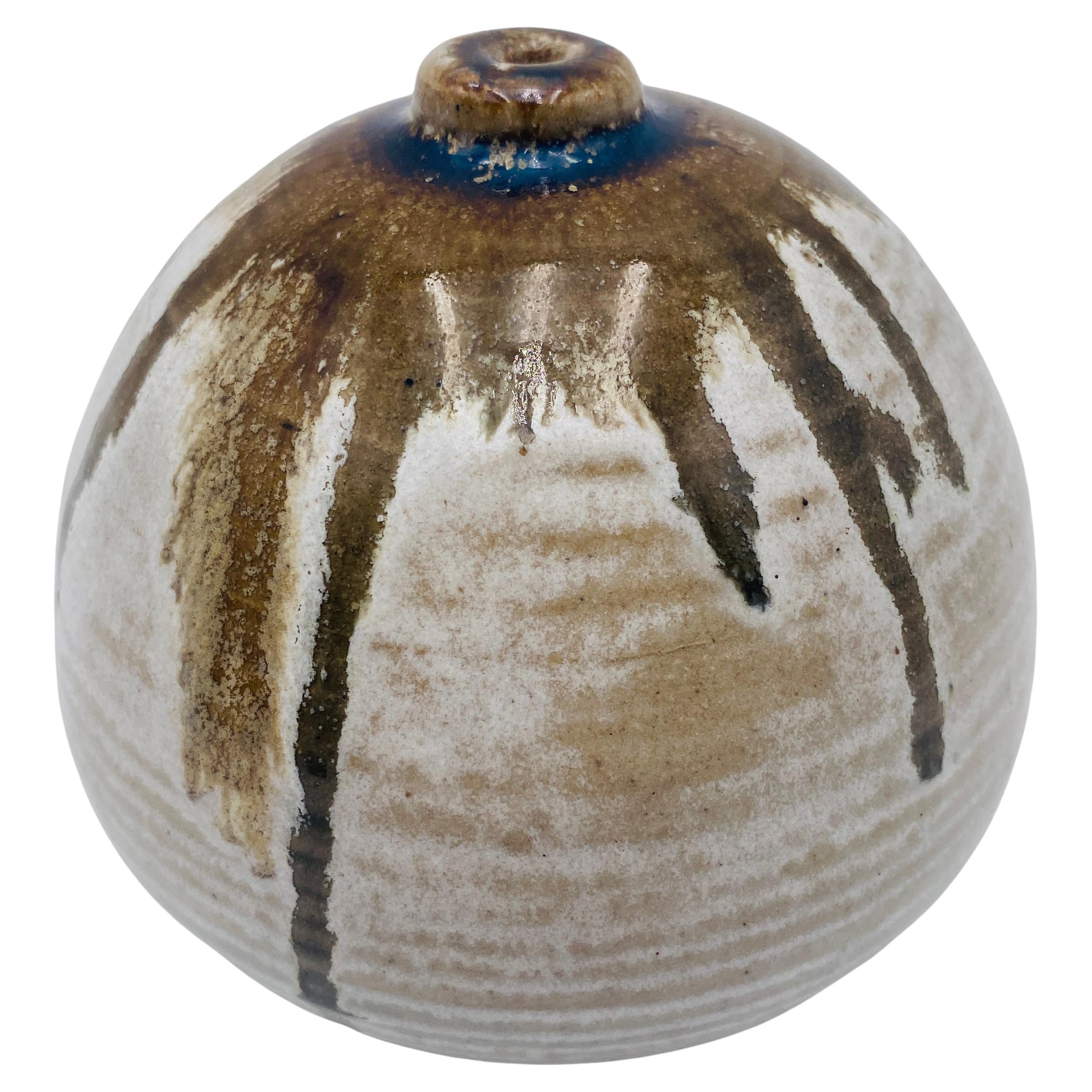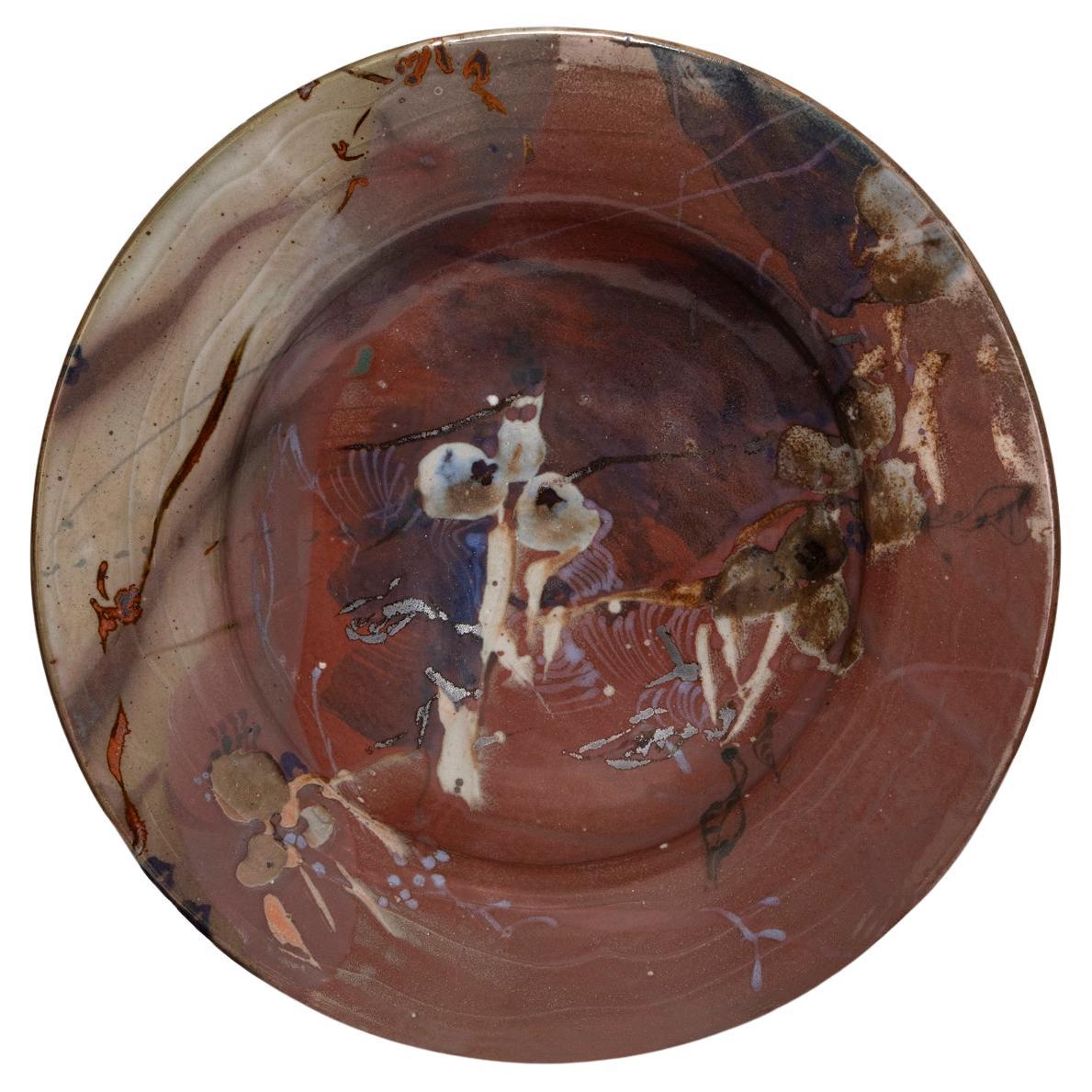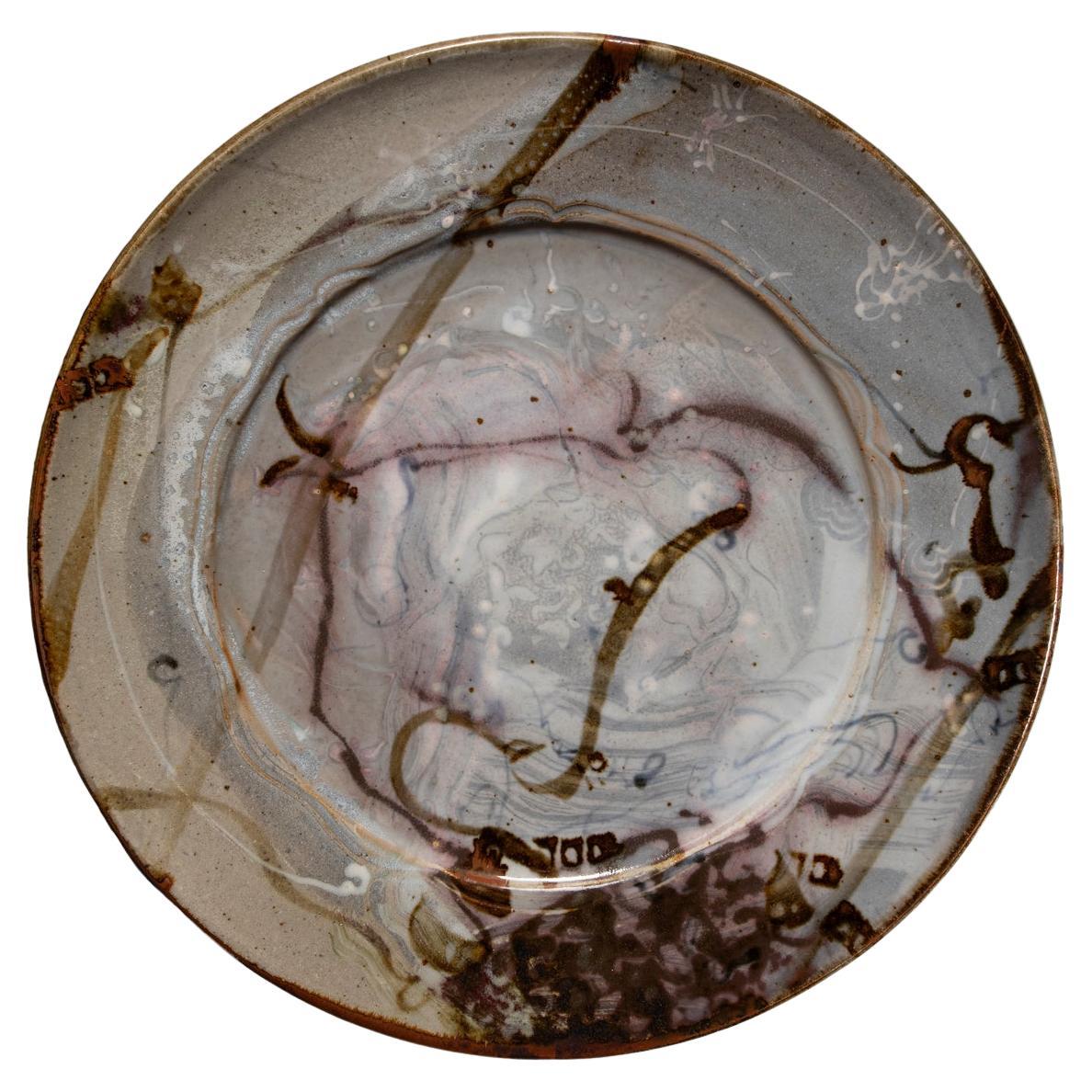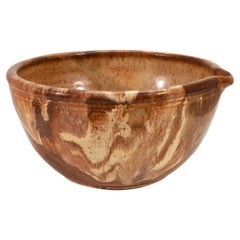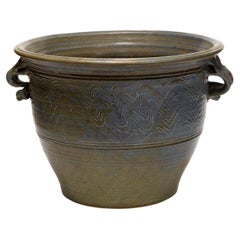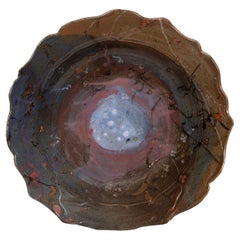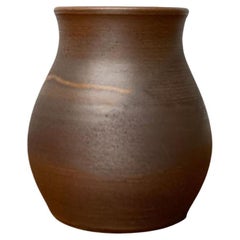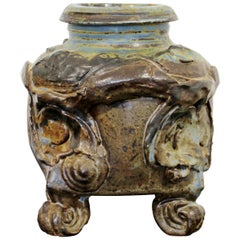
Mid-Century Modern John Glick Signed Handmade Pottery Ceramic Footed Vase 1960s
View Similar Items
Want more images or videos?
Request additional images or videos from the seller
1 of 7
Mid-Century Modern John Glick Signed Handmade Pottery Ceramic Footed Vase 1960s
$450List Price
About the Item
- Creator:John Glick (Sculptor)
- Dimensions:Height: 7 in (17.78 cm)Diameter: 6 in (15.24 cm)
- Style:Mid-Century Modern (Of the Period)
- Materials and Techniques:
- Place of Origin:
- Period:
- Date of Manufacture:circa 1960s
- Condition:
- Seller Location:Keego Harbor, MI
- Reference Number:1stDibs: LU2715320048002
About the Seller
4.9
Gold Seller
Premium sellers maintaining a 4.3+ rating and 24-hour response times
Established in 2014
1stDibs seller since 2017
1,002 sales on 1stDibs
Typical response time: 3 hours
Authenticity Guarantee
In the unlikely event there’s an issue with an item’s authenticity, contact us within 1 year for a full refund. DetailsMoney-Back Guarantee
If your item is not as described, is damaged in transit, or does not arrive, contact us within 7 days for a full refund. Details24-Hour Cancellation
You have a 24-hour grace period in which to reconsider your purchase, with no questions asked.Vetted Professional Sellers
Our world-class sellers must adhere to strict standards for service and quality, maintaining the integrity of our listings.Price-Match Guarantee
If you find that a seller listed the same item for a lower price elsewhere, we’ll match it.Trusted Global Delivery
Our best-in-class carrier network provides specialized shipping options worldwide, including custom delivery.More From This Seller
View AllJohn Glick Modernist Stoneware Glazed Ceramic Footed Planter Plum Tree Pottery
By John Glick
Located in Keego Harbor, MI
A modernist stoneware glazed ceramic planter by Detroit artist John Glick of Plum Tree Pottery. Circa late 20th century. Glazed in earthtones. Artisisnal yet functional and makes a u...
Category
Late 20th Century American Planters, Cachepots and Jardinières
Materials
Ceramic
John Glick Modernist Stoneware Glazed Ceramic Planter Vessel Plum Tree Pottery
By John Glick
Located in Keego Harbor, MI
A modernist stoneware glazed ceramic planter by Detroit artist John Glick of Plum Tree Pottery. Circa late 20th century. Glazed in earthtones. Artisisnal yet functional and makes a u...
Category
Mid-20th Century American Vases
Materials
Ceramic
John Glick Ceramic Stoneware Rare Yellow Vase Signed
By John Glick
Located in Keego Harbor, MI
A modernist stoneware glazed rare ceramic vase by Detroit artist John Glick of Plum Tree Pottery. Circa late 20th century. Glazed in earthtones. Artisisnal yet functional and makes a...
Category
Late 20th Century American Pottery
Materials
Pottery
John Glick Ceramic Stoneware Bowl with Spout Signed
By John Glick
Located in Keego Harbor, MI
A modernist stoneware glazed ceramic bowl by Detroit artist John Glick of Plum Tree Pottery. Circa late 20th century. Glazed in earthtones. Artisisnal yet functional and makes a uniq...
Category
Late 20th Century American Pottery
Materials
Pottery
John Glick Ceramic Stoneware Square Serving Platter Signed
By John Glick
Located in Keego Harbor, MI
A modernist stoneware glazed ceramic platter by Detroit artist John Glick of Plum Tree Pottery. Circa late 20th century. Glazed in earthtones. Artisisnal yet functional and makes a u...
Category
Late 20th Century American Pottery
Materials
Pottery
John Glick Modernist Stoneware Glazed Ceramic Pottery Tea Pot Plum Tree Pottery
By John Glick
Located in Keego Harbor, MI
A modernist stoneware glazed ceramic tea pot by Detroit artist John Glick of Plum Tree Pottery. Circa late 20th century. Glazed in earthtones. Artisisnal yet functional and makes a u...
Category
Mid-20th Century American Decorative Dishes and Vide-Poche
Materials
Ceramic
You May Also Like
John Glick Ceramic Garden Planterette Signed
By John Glick
Located in Bloomfield Hills, MI
The Ceramic Garden Planterette is an example of the kind of work by which John Glick became so famous. He was seduced by the effects of the reduction kiln, which decreased the levels of oxygen during firing, inducing the flame to pull oxygen out of the clay and glazes changing the colors of the glazes depending on their iron and copper content. In this way he achieved the rich gradients of ochre and umber and variations in stippling and opacity. The piece is signed by Glick and stamped with the name of his studio: Plum Street Pottery on the verso.
John was an American Abstract Expressionist ceramicist born in Detroit, MI. Though open to artistic experimentation, Glick was most influenced by the styles and aesthetics of Asian pottery—an inspiration that shows in his use of decorative patterns and glaze choices. He has said that he is attracted to simplicity, as well as complexity: my work continually reflects my re-examination that these two poles can coexist… or not, in a given series. Glick also took influences from master potters of Japan, notably Shoji Hamada and Kanjrio Kawai, blending their gestural embellishments of simple forms with attitudes of Abstract Expressionism. He was particularly drown to the work of Helen Frankenthaler whose soak-stain style resonated with Glick’s multi-layered glaze surfaces, which juxtaposed veils of atmospheric color with gestural marks and pattern. He spent countless hours developing and making his own tools in order to achieve previously unseen results in his work with clay and glaze.
Glick’s “Plum Tree Pottery” (now a designated historic landmark in Farmington Hills, Michigan) studio opened around 1965 and closed in the summer of 2016. It was a private studio space for John and a number of his students and assistants. He believed his shapes evolved guided by forces apparently outside his control. This was instinctual, intellectual and due to his openness to change, fusing into what he thought was the most positive force behind a potter’s approach: evolution and growth. Some have called it inspiration.
John was not only a major figure in the Detroit creative community, but in the ceramics world at large. According to Shelley Selim in her book on John, “John Glick: A Legacy in Clay” John remains: “one of the most recognizable names in the field of studio pottery – known for lecturing, publishing, and offering workshops widely – and his work has been featured in well over a hundred local, national and international exhibitions since he was a college student in the late 1950s.” Along with this John has mentored over thirty studio apprentices over five and a half decades, received numerous grants and awards for his work, and has been prolific, with an estimated 300,000 ceramic wares throughout the world.
He received his Masters from Cranbrook Academy of Art in Bloomfield Hills, Michigan, working with Maija Grotell, a legendary and influential teacher. Grotell was noted for her deep interest in the human connection to nature’s rhythms and patters. These ideas often grounded her dialog with her students including Glick, affecting, a profund and lasting influence on his future work. This famous Art Academy was designed by architect and faculty member, Eliel Saarinen who collaborated with Charles and Ray Eames on chair and furniture design. Numerous creative artists who are alumni of Cranbrook include: Harry Bertoia, Florence Knoll, Jack Lenor Larsen, Donald Lipski, Duane Hanson, Nick Cave, Hani Rashid, George Nelson, Urban Jupena (Nationally recognized fiber artist), Artis Lane (the first African-American artist to have her sculpture, "Sojourner Truth," commissioned for the Emancipation Hall in the Capital Visitor Center in Washington DC), Cory Puhlman (televised Pastry Chef extraordinaire), Thom O’Connor (Lithographs), Paul Evans (Brutalist-inspired sculpted metal furnishings), Eugene Caples (small bronze images/abstract), Morris Brose (Bronze Sculptures), Herb Babcock (blown glass), Larry Butcher (mixed media) and Lauren Anais Hussey...
Category
1990s American American Classical Planters, Cachepots and Jardinières
Materials
Ceramic
John Glick Plum Street Pottery Signed Monumental Ceramic Charger
By John Glick
Located in Bloomfield Hills, MI
The ceramic charger with scalloped edge is an example of the kind of work by which John Glick became so famous. He was seduced by the effects of the reduction kiln, which decreased the levels of oxygen during firing, inducing the flame to pull oxygen out of the clay and glazes changing the colors of the glazes depending on their iron and copper content. In this way he achieved the rich gradients of ochre and umber and variations in stippling and opacity. It is signed on verso.
John was an American Abstract Expressionist ceramicist born in Detroit, MI. Though open to artistic experimentation, Glick was most influenced by the styles and aesthetics of Asian pottery—an inspiration that shows in his use of decorative patterns and glaze choices. He has said that he is attracted to simplicity, as well as complexity: my work continually reflects my re-examination that these two poles can coexist… or not, in a given series. Glick also took influences from master potters of Japan, notably Shoji Hamada and Kanjrio Kawai, blending their gestural embellishments of simple forms with attitudes of Abstract Expressionism. He was particularly drown to the work of Helen Frankenthaler whose soak-stain style resonated with Glick’s multi-layered glaze surfaces, which juxtaposed veils of atmospheric color with gestural marks and pattern. He spent countless hours developing and making his own tools in order to achieve previously unseen results in his work with clay and glaze.
Glick’s “Plum Tree Pottery” (now a designated historic landmark in Farmington Hills, Michigan) studio opened around 1965 and closed in the summer of 2016. It was a private studio space for John and a number of his students and assistants. He believed his shapes evolved guided by forces apparently outside his control. This was instinctual, intellectual and due to his openness to change, fusing into what he thought was the most positive force behind a potter’s approach: evolution and growth. Some have called it inspiration.
John was not only a major figure in the Detroit creative community, but in the ceramics world at large. According to Shelley Selim in her book on John, “John Glick: A Legacy in Clay” John remains: “one of the most recognizable names in the field of studio pottery – known for lecturing, publishing, and offering workshops widely – and his work has been featured in well over a hundred local, national and international exhibitions since he was a college student in the late 1950s.” Along with this John has mentored over thirty studio apprentices over five and a half decades, received numerous grants and awards for his work, and has been prolific, with an estimated 300,000 ceramic wares throughout the world.
He received his Masters from Cranbrook Academy of Art in Bloomfield Hills, Michigan, working with Maija Grotell, a legendary and influential teacher. Grotell was noted for her deep interest in the human connection to nature’s rhythms and patters. These ideas often grounded her dialog with her students including Glick, affecting, a profund and lasting influence on his future work. This famous Art Academy was designed by architect and faculty member, Eliel Saarinen who collaborated with Charles and Ray Eames on chair and furniture design. Numerous creative artists who are alumni of Cranbrook include: Harry Bertoia, Florence Knoll, Jack Lenor Larsen, Donald Lipski, Duane Hanson, Nick Cave, Hani Rashid, George Nelson, Urban Jupena (Nationally recognized fiber artist), Artis Lane (the first African-American artist to have her sculpture, "Sojourner Truth," commissioned for the Emancipation Hall in the Capital Visitor Center in Washington DC), Cory Puhlman (televised Pastry Chef extraordinaire), Thom O’Connor (Lithographs), Paul Evans (Brutalist-inspired sculpted metal furnishings), Eugene Caples (small bronze images/abstract), Morris Brose (Bronze Sculptures), Herb Babcock (blown glass), Larry Butcher (mixed media) and Lauren Anais Hussey...
Category
1990s American Expressionist Decorative Dishes and Vide-Poche
Materials
Ceramic
Mid-Century Ceramic Vase Signed H.W., 1960s
Located in Hamburg, DE
Mid-Century Ceramic Vase Signed H.W., 1960s, in Very Good conditions. Designed 1960 to 1969.
Additional information:
Materials: Ceramic
Style: Mid-Century Modern
Color: Brown
Item T...
Category
20th Century Mid-Century Modern Vases
Materials
Ceramic
Mid-Century Modern Signed Large Ceramic Footed Bowl Vase
Located in Los Angeles, CA
Mid-Century Modern signed large ceramic footed bowl vase.
Category
Vintage 1970s American Mid-Century Modern Vases
Materials
Stoneware
1960s Mid-Century Modern W. Germany Ceramic Vase
Located in High Point, NC
A ceramic vase from mid-20th century Germany. Neither large nor small, this studio made pot reflects the hand-held, and the handmade; the tactility of process and the artist's vision...
Category
Vintage 1960s German Mid-Century Modern Vases
Materials
Ceramic
1960s Mid-Century Modern W. Germany Ceramic Vase
Located in High Point, NC
A ceramic vase from mid-20th century Germany. Neither large nor small, this studio made pot reflects the hand-held, and the handmade; the tactility of process and the artist's vision...
Category
Vintage 1960s German Mid-Century Modern Vases
Materials
Ceramic
Recently Viewed
View AllMore Ways To Browse
John Glick Pottery
Murano Art Blown Glass Vases
Handmade Glass Vase
Chinese Vase Base
Textured Black Vases
Porcelain Vase Handles
Vintage Albert Furniture
Blue And White Porcelain Vase
1920 French Vases
Clay Ancient
Cobalt Blue Decorative Object
Vintage Scandinavian Glass Vases
Art Nouveau Austria
Pink Glaze
Studio Pottery Signed
Weller Art Pottery
Vase With Two Handles
Copper Flower
